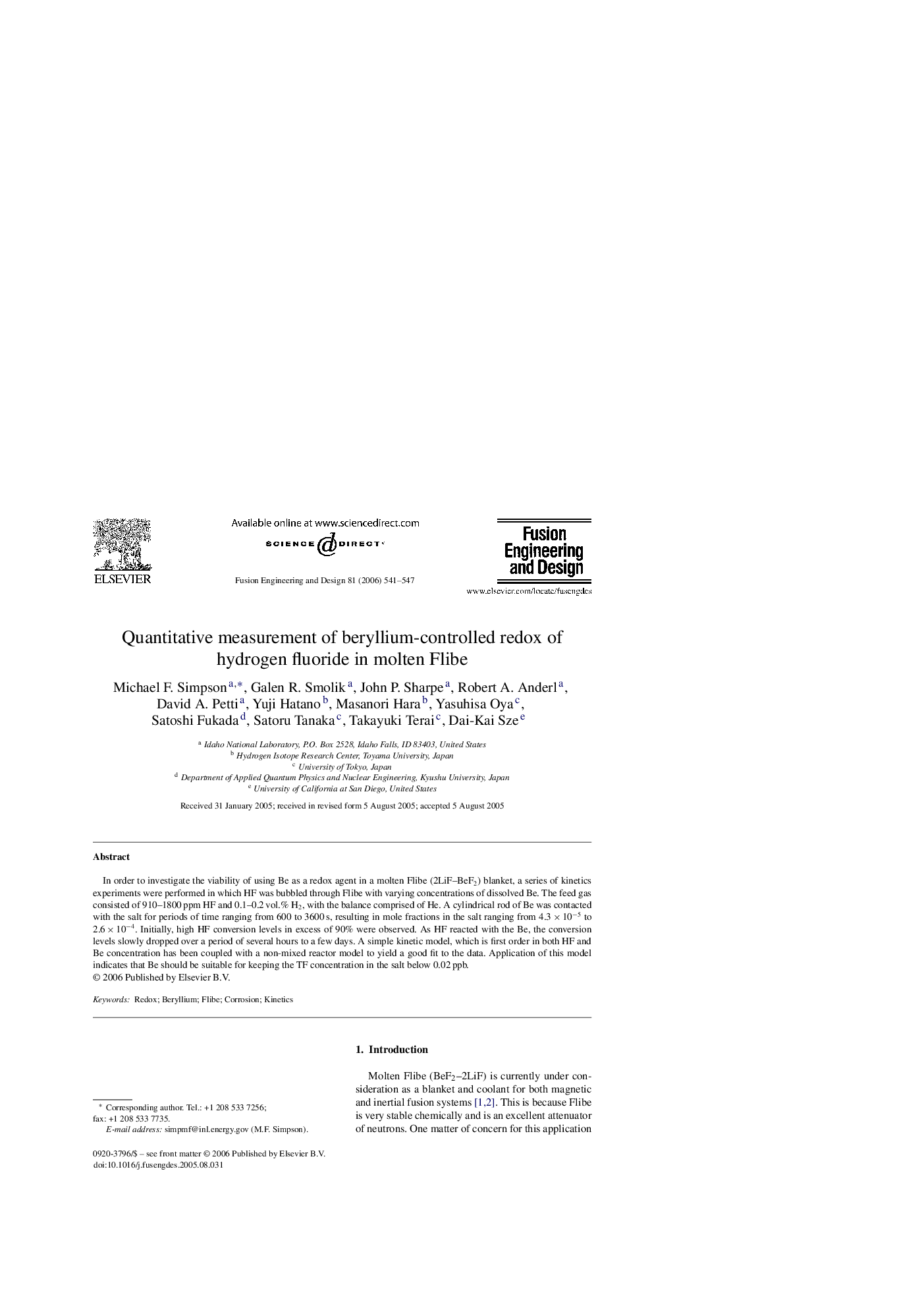| Article ID | Journal | Published Year | Pages | File Type |
|---|---|---|---|---|
| 273497 | Fusion Engineering and Design | 2006 | 7 Pages |
In order to investigate the viability of using Be as a redox agent in a molten Flibe (2LiF–BeF2) blanket, a series of kinetics experiments were performed in which HF was bubbled through Flibe with varying concentrations of dissolved Be. The feed gas consisted of 910–1800 ppm HF and 0.1–0.2 vol.% H2, with the balance comprised of He. A cylindrical rod of Be was contacted with the salt for periods of time ranging from 600 to 3600 s, resulting in mole fractions in the salt ranging from 4.3 × 10−5 to 2.6 × 10−4. Initially, high HF conversion levels in excess of 90% were observed. As HF reacted with the Be, the conversion levels slowly dropped over a period of several hours to a few days. A simple kinetic model, which is first order in both HF and Be concentration has been coupled with a non-mixed reactor model to yield a good fit to the data. Application of this model indicates that Be should be suitable for keeping the TF concentration in the salt below 0.02 ppb.
